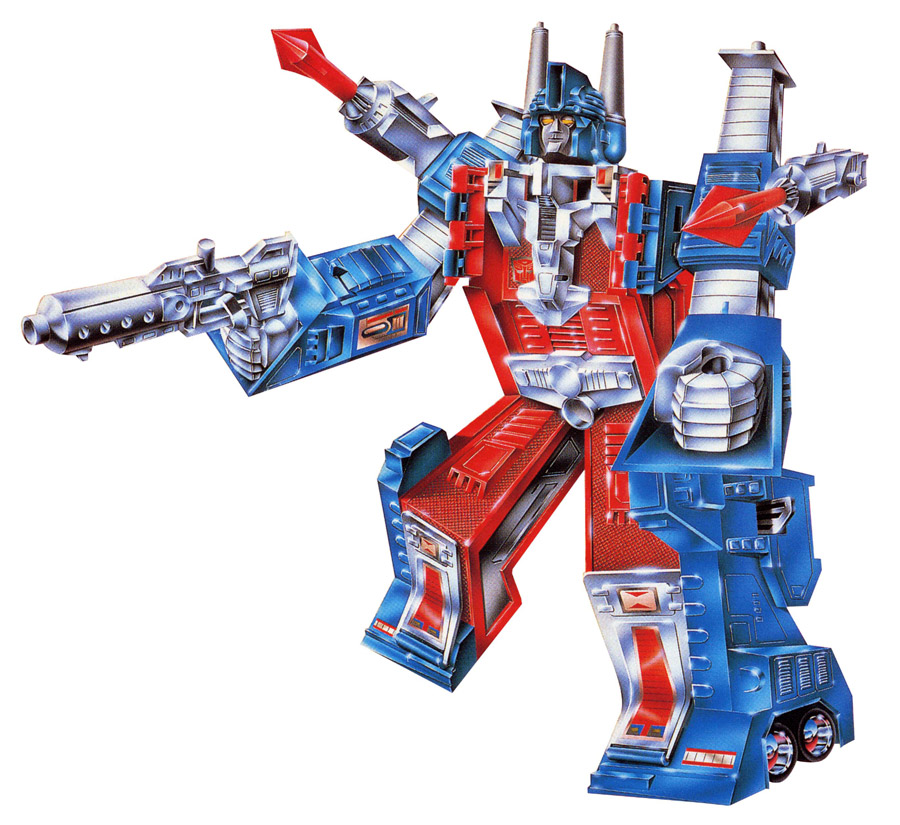
Several people have voiced outrage about presumed cost-cutting measures on the Masterpiece line, the drop down to plastic tyres seems to rankle many collectors, and while I understand there may be practical reasons behind the change, I have to say I miss the smell of rubber tyres, and the overall higher quality feel they provide.
However, these sorts of cost-cutting measures are nothing new. Metroplex had running changes removing rubber wheels, Powermaster Prime was significantly simplified compared to Takara’s Ginrai, and figures like Octane and Astrotrain were simplified after their initial prototypes. For me though, one figure stands out above all the rest; the running changes seen so often on the later 1986 versions of Ultra Magnus.
As a kid, I only ever had, or knew about, the unpainted, plastic wheeled, cheaper Ultra Magnus. I was never really a fan of the toy or the character growing up. My opinions on the toy changed pretty rapidly once I found out that the original release was of a much better quality across the board.
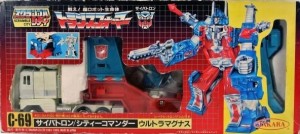
In this article, we’ll have a side-by-side comparison showcasing the difference between the second run UK release of plastic wheel Ultra Magnus (always on the left), and the initial release (always on the right). For the sake of this article, we’re using the 2002 reissue as a stand-in for the original release, as they are identical toys except for a couple of changes on the missiles and shorter smokestacks.
Be warned, this is probably my most nit-picky article yet, but it was actually requested by someone in a Facebook group as they had no idea of the different release.
ULTRA MAGNUS VS ULTRA MAGNUS
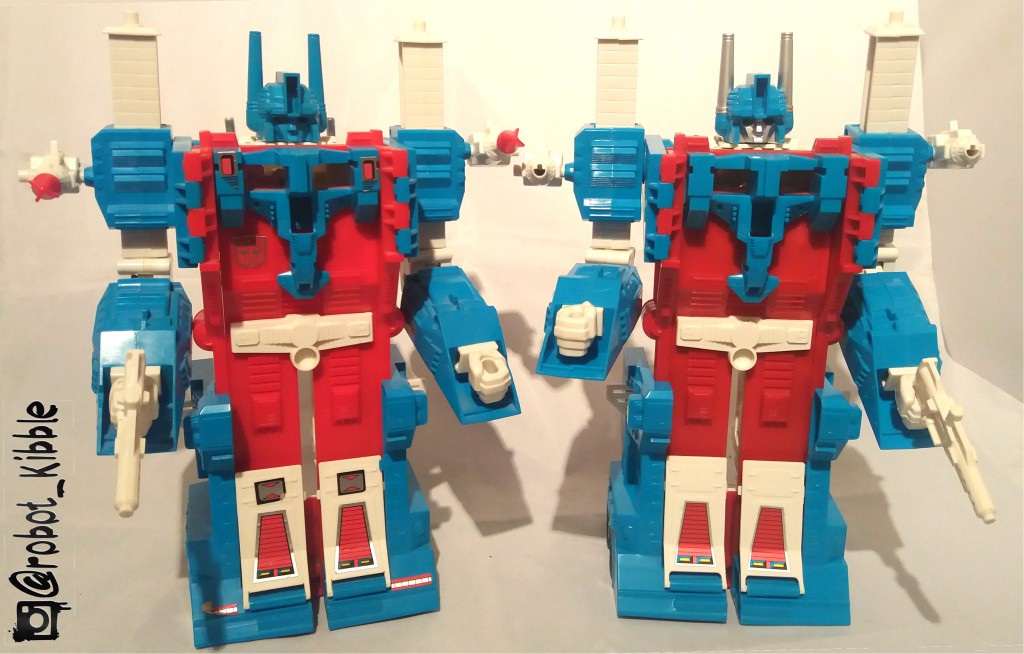
If we look at the two figures dead on, the only really noticeable difference is in the helmet, and it’s lack of paint detail.
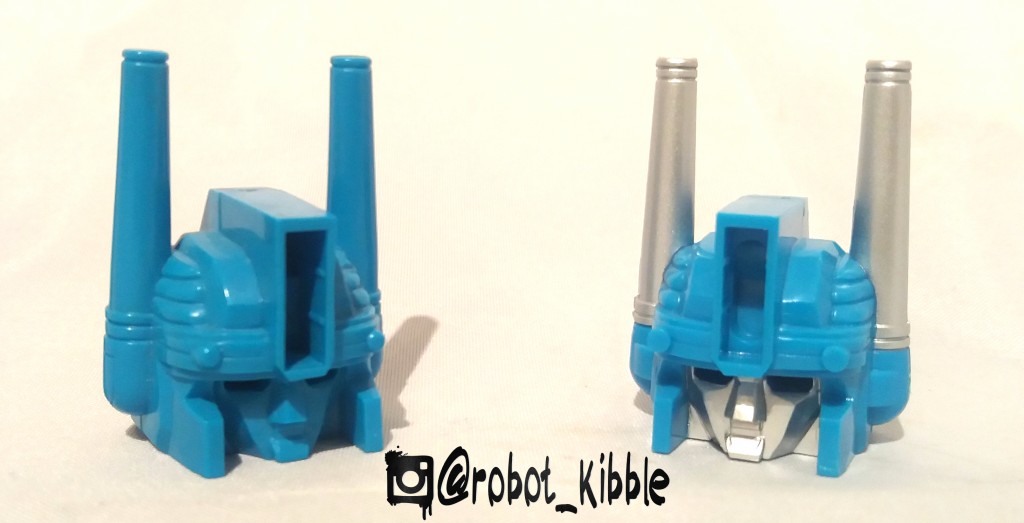
A two-piece cast which is then glued together, the head is the most defining part of the character, and without the paint it’s really hard to even consider the figure Ultra Magnus. For me this is the biggest sin of the set.
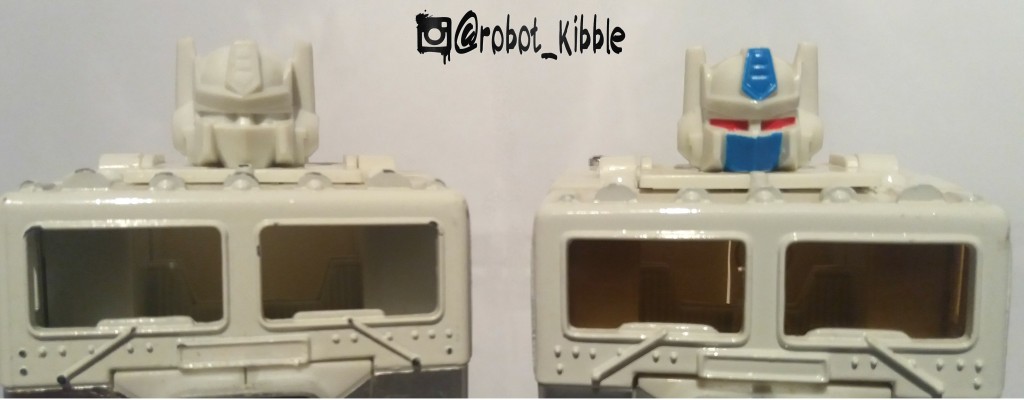
Unfortunately, this was also carried over onto the “White Prime” cab section of Ultra Magnus. A shame, because the first run on the right had the same paint detail as Takara’s Powered Convoy, the toy which pre-dated Ultra Magnus, and was intended as a powered up version of Convoy, rather than a new character all in himself. How different would the cartoon and animated movie been had the writers decided to save this power suit for Optimus Prime, maybe even using it as the suit that restores him to life at the end of the movie, and leads to ultimate victory? We’ll never know.
To the character of Ultra Magnus, this detail doesn’t matter to much, but as a kid, it makes the toy a whole extra character in it’s own right, rather than the sad, dead-eyed white Prime that ruined my slightly inconvenienced but made very little overall difference to my childhood.
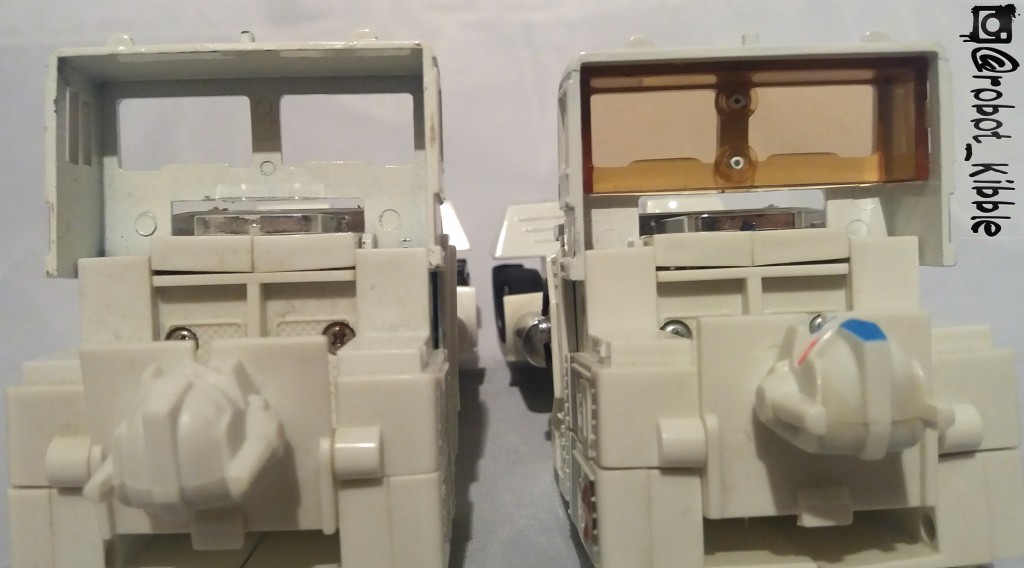
While we’re up top, look at the difference a little bit of perspex can make. I’ve always felt the removal of the windshield weakened the overall look of the alt. mode, and hurt the White Prime mode, although not as much as the paint. At this point, let’s just be glad they bothered to give us the small hands for the cab section at all!
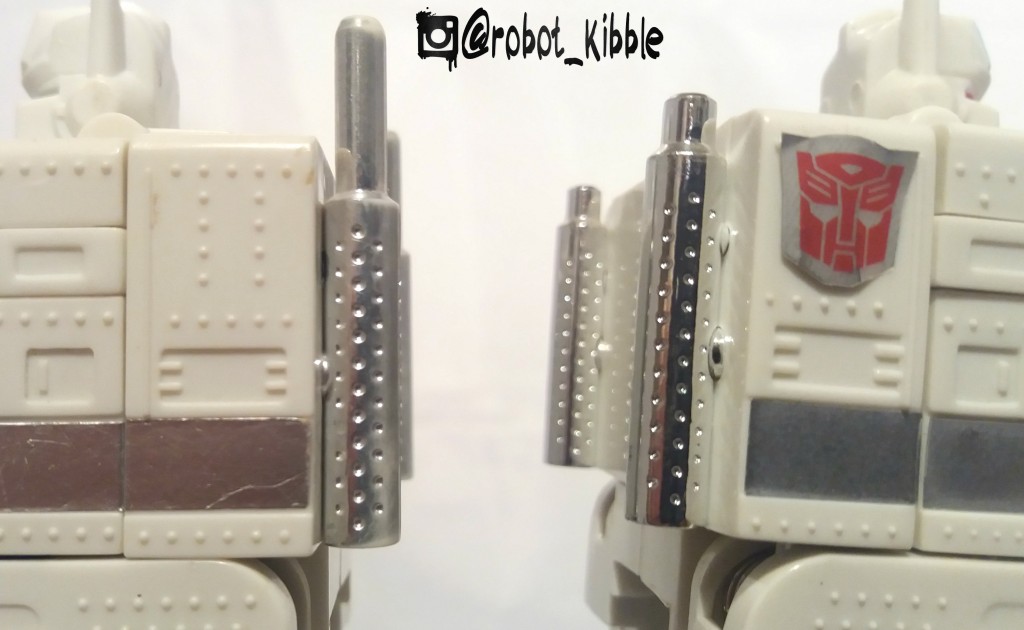
Smokestacks detail. Okay, ignore the size disparity as the original release had normal length smoke-stacks, but the one on the right is clearly a nice chrome plated part. The late 1986 onward release merely had generic white plastic, with a top coat of silver paint. While they had that out, it’s a shame they couldn’t hit the blue helmet (oo-er missus).
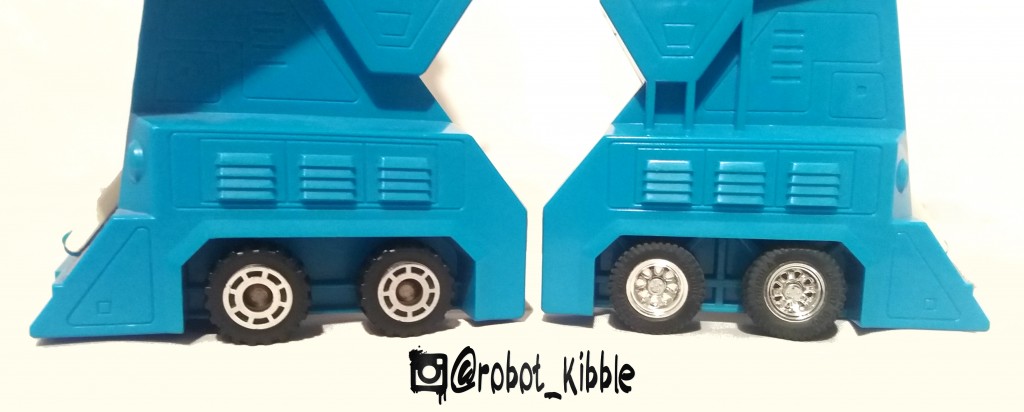
Wheels. Plastic on the left, chromed with rubber tyres on the right. I’m not sure why, I’ve always loved rubber tyres on my toys and even as a kid I saw it as a mark of real quality. Maybe if Optimus Prime and the other Autobots always had plastic tyres it wouldn’t have caught my attention, but after the quality of the first two years of G1, I felt this very noticable. Ultra Magnus has ten tyres, which are very noticable in alt. mode and on White Prime, that’s a lot of time lost by factory staff putting rubber tyres on chrome wheels.
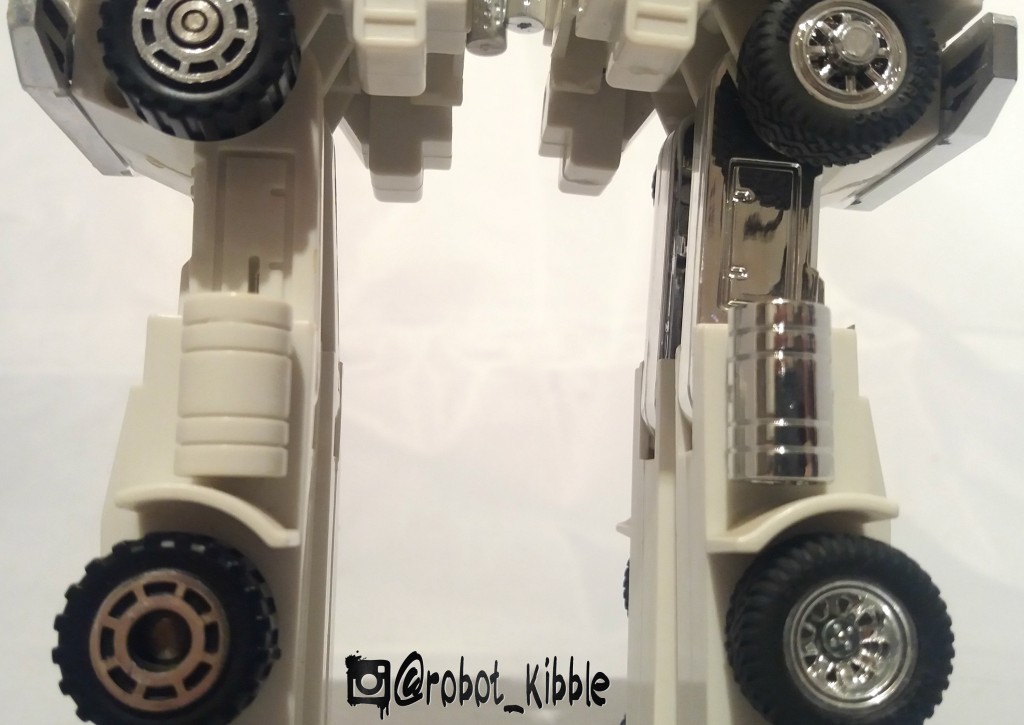
Ugh, where to begin. First, lets look at the rubber tyre at the top of the one on the right, it has a sort of tab protruding 2 mil or so from the center (better picture below). This provides extra stability for the figure in combined mode, and helps kids line up White Prime when inserting him into the armour, and takes some of the weight and stress out of White Primes headlights / hand pegs. I distinctly remember this as a kid, so I’m sure someone at school had the first release. Why would Hasbro change this? Well, tooling and producing 10 identical wheels is cheaper than tooling and producing 8 and 2 different, and reduces the risk of bad factory QC down to the wrong wheel being installed.
Again, chromed parts have been replaced with white plastic, this time completely unpainted, which really hurts the can section and the alt. mode. It also affects the stability of the figure because…
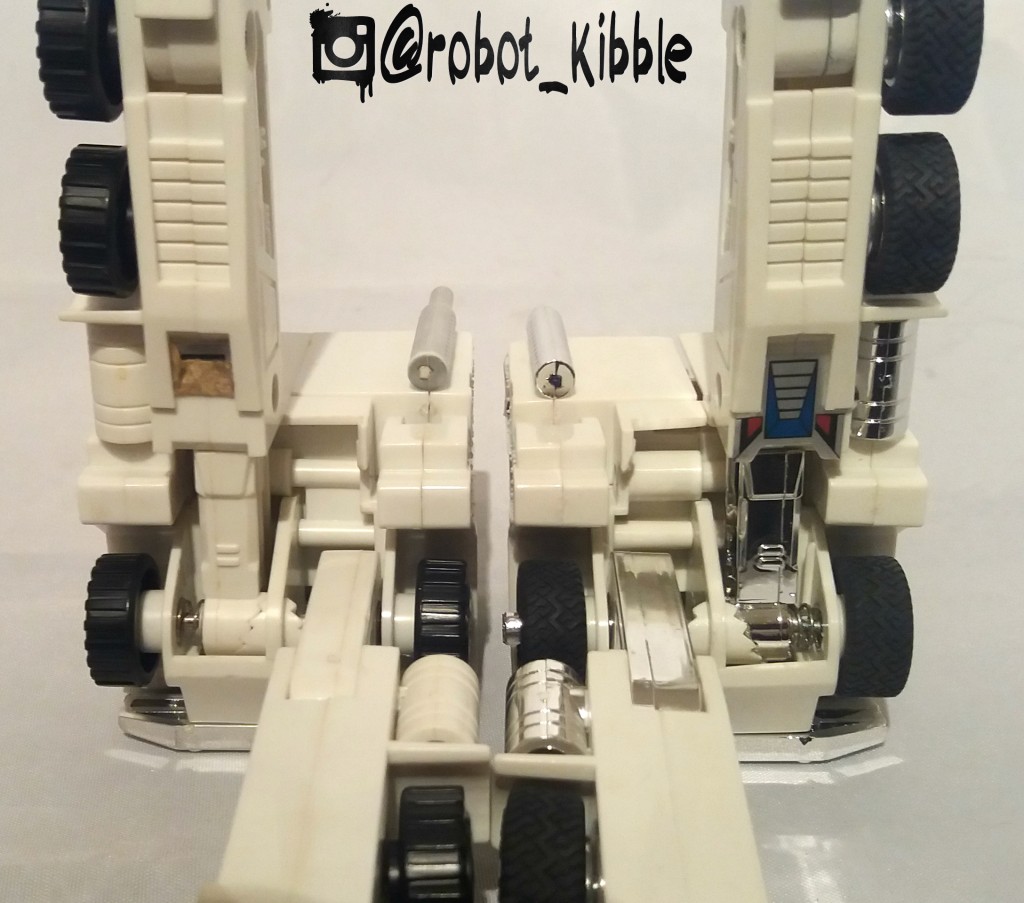
…well, I’m not sure if it’s because the plastic is cheaper, but the teeth tend to wear down much, much quicker on the all plastic version on the left. The spring holding the whole mechanism together is noticeable less coiled and thus weaker on the plastic version. As a dealer, I’ve bought in hundreds of Ultra Magni over the years, and floppy legged white cabs are very, very common. Even beater G1 Primes tend to have a bit of stability at the hips, even if the knees are trashed.
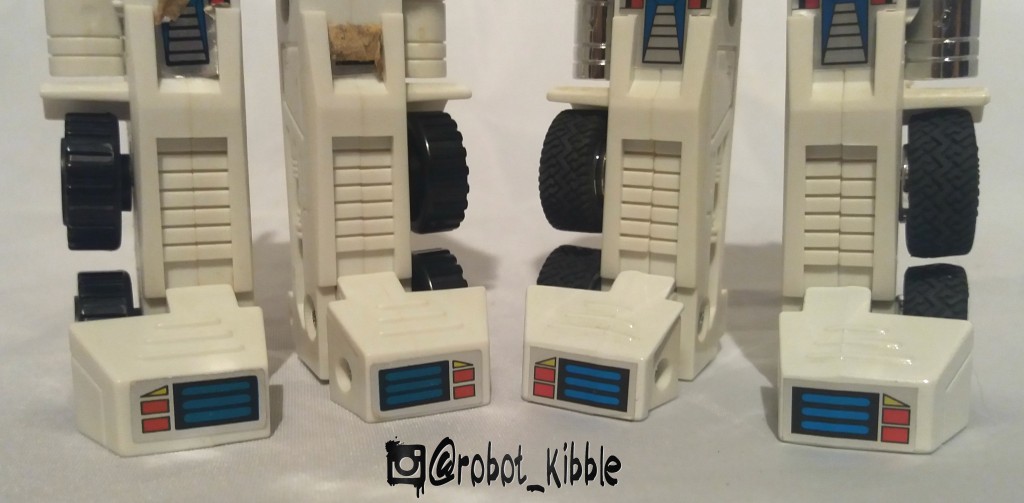
Metal feet (not a dancing penguin Rob Halford voiced animated movie) on the right, versus plastic feet on the cheaper second run. Does it make much of a difference? Actually, it probably helps reduce damage during play having the plastic (as we say with Binaltech Vs Alternator), however, the extra metal does add some stability to the figure in White Prime robot mode.
Summation
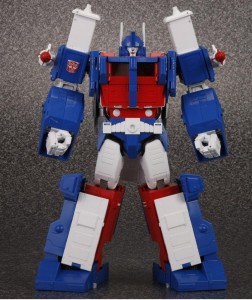
It’s easy to see Ultra Magnus massively differs from his Diaclone predecessor Powered Convoy in that Hasbro never intended for the cab section of Ultra Magnus to be used as a character in his own right. Indeed, in the cartoon and the comics, his cab was swallowed whole by the trailer (as seen in the stunning Masterpiece release above) rather than being a power suit with additional armour (a look that was introduced during the second Dreamwave miniseries in October 2003, and then the concept was utilised for Fans Project’s first full figure; City Commander).
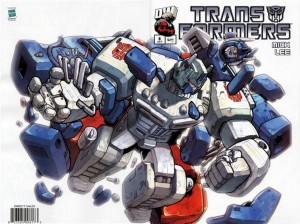
Because of this, I believe Hasbro felt it made sense to minimise the attention to detail on the cab section and reduced the cost to maximise profits, it’s very sad that along the way the paint was also removed from the helmet, as this had a knock on effect of really damaging the look of the figure in combined / powersuit mode. However, the White Prime robot mode is heavily featured right on the front of the box packaging (albeit without face paint), so again, it is weird they would change even a secondary aspect of the figure that drastically after it’s initial release.
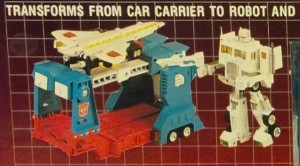
Ultimately, cost cutting will always happen. I personally think the move to lower part counts and simplified figures combined with gimmick-Master of the month helped path the road to G1 cancellation, however no toyline formed in the eighties was expected to last more than 3-4 years, so the fact we’re even here 32 years later suggests that maybe Hasbro knew what they were doing.
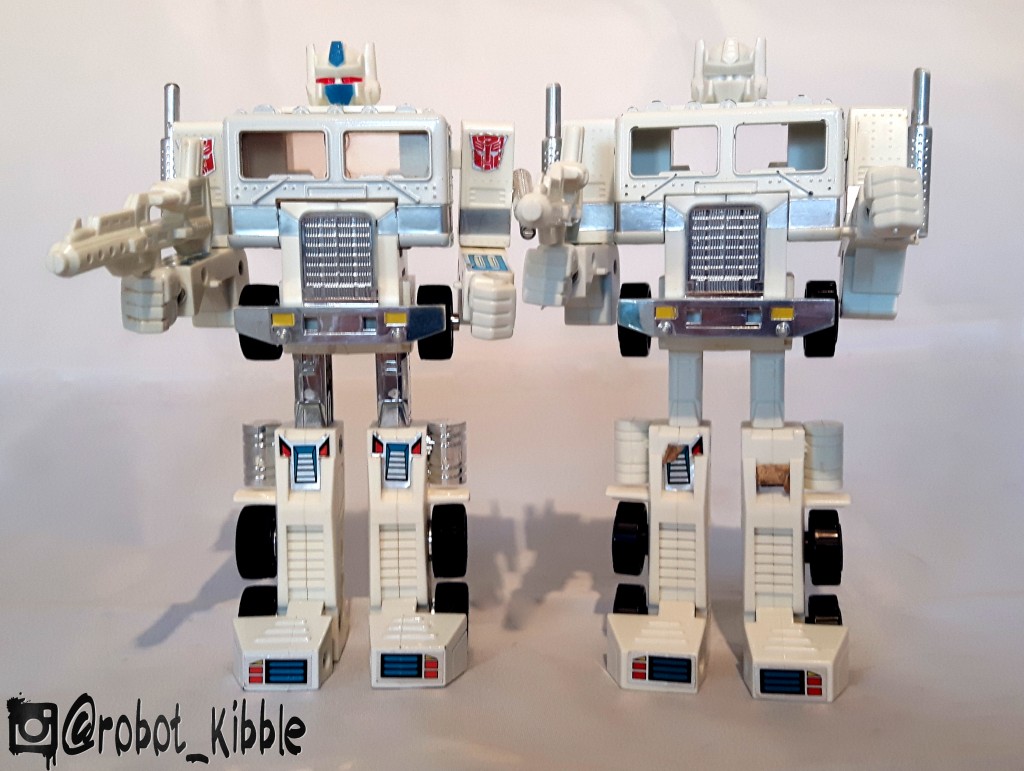
Original 1986 first run (Made in Japan) with large smokestacks and 1986 second run (Made in Macau).
Last but not least, let’s get real nerdy.
The original 1986 Rubber tyre release of Magnus is marked as Made in Japan, the reissue of it from 2002 is marked Made in China, and of all the UK available second run plastic tyres I’ve checked (three today), all are marked Made in Macua. All of them are date-stamped 1984 – the year of the original release of the mold. If you find any with different markings, please comment below.
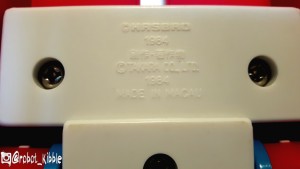
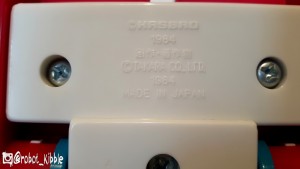
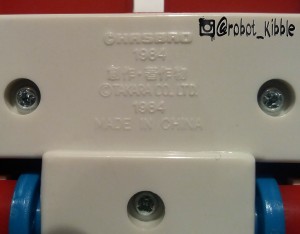
Thanks to Kapow for hosting these blogs and providing some of the figures, various Magni including the forthcoming Original Animation / Powered Convoy colours Delta Magnus – the subject of a forthcoming comparison blog – are available here.
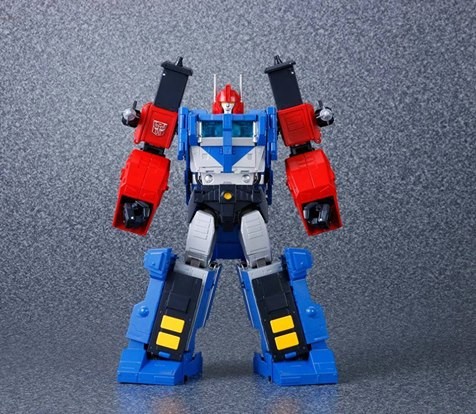















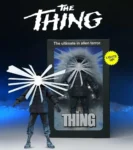 NECA The Thing Ultimate The Thing LED Poster Series Action Figure
NECA The Thing Ultimate The Thing LED Poster Series Action Figure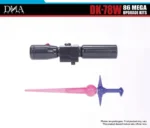 DNA Design DK-78W 86 Mega Upgrade ( Cannon and Saber )
DNA Design DK-78W 86 Mega Upgrade ( Cannon and Saber )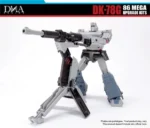 DNA Design DK-78G 86 Mega Upgrade ( Heavy Cannon Mode )
DNA Design DK-78G 86 Mega Upgrade ( Heavy Cannon Mode )